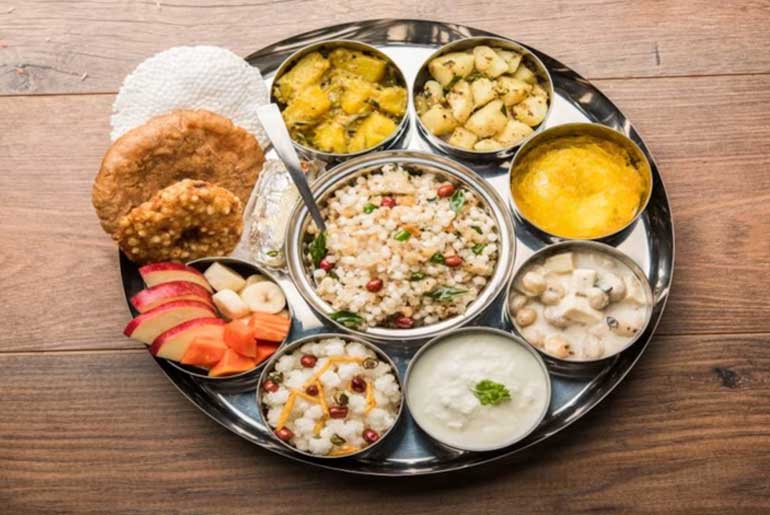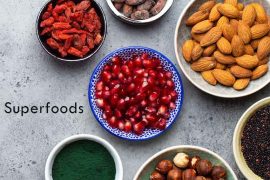Shardiya Navratri is a Hindu festival that spans nine nights and is dedicated to the worship of the Goddess Durga. Many people observe fasting during this period, and the choice of food is an essential part of this tradition. Millets, which are highly nutritious and gluten-free grains, can be an excellent addition to your Navratri diet.
Benefits of 7 millets that can be consumed during Shardiya Navratri 2023:
1. Barnyard millet:
Barnyard millet (Samak rice) is a versatile and nutritious option for Navratri fasting. As a gluten-free grain, it offers essential nutrients like carbohydrates, fiber, vitamins, and minerals. From hearty khichdi and flavorful pulao to delightful desserts like kheer, you can create a variety of dishes with it. Thanks to its ability to provide sustained energy and keep you feeling full, Samak rice is an ideal choice for fasting during Navratri.
2. Amaranth (Rajgira):
Amaranth, also known as rajgira, is a popular and nutritious choice during Navratri fasting. These tiny seeds are not only rich in protein, providing essential amino acids, but also contain important minerals like iron, calcium, and magnesium. This nutritional profile makes amaranth an excellent addition to the fasting diet. It offers versatility in the kitchen, allowing you to prepare delicious dishes such as rajgira ladoos, chikkis, and even chapatis. Beyond its nutritional benefits, amaranth is known for aiding in digestion, which can be particularly valuable during fasting periods when maintaining digestive health is essential. In summary, amaranth is a favorite during Navratri fasting, offering both nourishment and digestive support to those observing this special occasion.
3. Vari:
Vari, also known as barnyard millet, is a fantastic option for Navratri fasting. Resembling Samak rice, it’s a gluten-free, low-calorie grain rich in fiber and carbohydrates. Vari can be used to prepare a variety of delicious dishes, including khichdi, pulao, and upma. Its versatility and nutritional profile make it an ideal choice for those seeking to maintain energy levels and feel full during fasting, all without sacrificing taste. With its health benefits and adaptability in the kitchen, barnyard millet is a valuable addition to Navratri meals, providing both nourishment and culinary enjoyment.
4. Foxtail millet:
Foxtail millet, known as Kangni in Hindi, is a superb choice for Navratri fasting. This nutrient-dense grain is not only low in calories but also high in fiber, offering sustained energy and a wealth of antioxidants, vitamins, and minerals. Its versatility in the kitchen allows for the preparation of dishes like dosas, idlis, upma, and flavorful pulaos during the fasting period. Kangni not only delights the palate but also provides crucial nutrients to help you maintain energy levels throughout the fasts. With its impressive nutritional profile and culinary adaptability, foxtail millet enhances the overall Navratri dining experience.
5. Little millet:
Little millet, known as Kutki, is a valuable addition to your Navratri fasting diet. This small-grain millet is gluten-free and brimming with nutrients. It’s a rich source of protein, dietary fiber, and a range of essential vitamins and minerals. Kutki can be employed in diverse dishes like upma, pulao, or idlis, adding variety and nutritional value to your fasting menu. Its gluten-free nature makes it a suitable option for those with dietary sensitivities, while its nutrient profile ensures that you receive essential nourishment during Navratri.
6. Pearl millet:
Pearl millet, known as Bajra, is a gluten-free and highly nutritious millet suitable for Navratri consumption. Packed with fiber, protein, and essential minerals like magnesium and iron, Bajra is a valuable addition to your fasting diet. You can prepare rotis, parathas, or wholesome porridge using Bajra, showcasing its versatility in Navratri cuisine. With its nutrient-rich profile, Bajra is an excellent choice to stay nourished during the fasting period.
7. Kodo millet:
Kodo millet is a nutritious and gluten-free grain that is commonly consumed in various parts of the world. This millet variety is known for its health benefits, particularly its high fiber content, which supports digestive health. Kodo millet can be used to make a variety of dishes, including rotis (flatbreads) and parathas, and it is appreciated for its versatility in the kitchen. It’s also rich in essential nutrients and is a popular choice for individuals seeking a healthy alternative to traditional grains.
These millets are not only nutritious but also versatile and can be used in various recipes to make your Navratri fasting period both delicious and health conscious. Ensure that you combine these millets with a variety of vegetables, spices, and herbs to create balanced and satisfying meals during Shardiya Navratri.
Disclaimer:
The information contained in this article is for educational and informational purposes only and is not intended as a health advice. We would ask you to consult a qualified professional or medical expert to gain additional knowledge before you choose to consume any product or perform any exercise.








